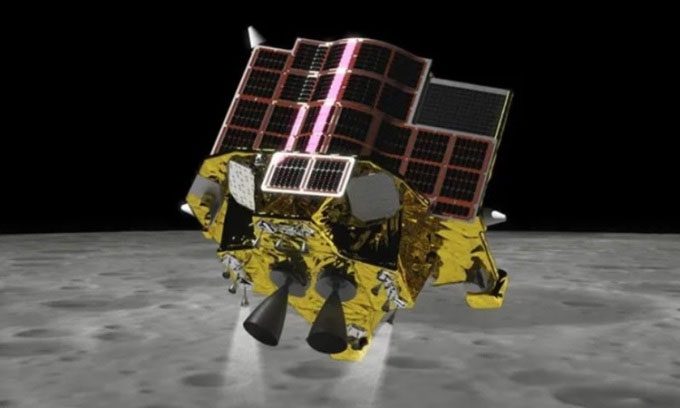The SLIM lunar lander is set to touch down on the Moon’s surface in January 2024, promising to make Japan the fifth country to achieve this milestone after the Soviet Union, the United States, China, and India.

Simulation of SLIM preparing for landing. (Image: JAXA).
The SLIM Autonomous Lunar Lander from Japan entered lunar orbit on December 25 as scheduled, according to the Japan Aerospace Exploration Agency (JAXA). The spacecraft entered lunar orbit at 1:51 PM local time in Hanoi.
JAXA officials stated that the spacecraft is in an elliptical orbit, taking 6.4 hours to complete one orbit around the Moon, with the closest point being 600 km from the surface and the farthest point being 4,000 km. This milestone marks SLIM’s approach to its landing target on January 19, 2024. This will be a historic achievement, as only four countries—the Soviet Union, the United States, China, and India—have successfully landed spacecraft softly on the Moon so far.
SLIM, which is 2.7 meters long, was launched on September 6 alongside the XRISM, a powerful X-ray space telescope. Both Japanese spacecraft were deployed into Earth orbit, with XRISM remaining there. However, SLIM escaped Earth’s gravity on September 30, beginning its long, energy-efficient journey to the Moon. The lander is now preparing for the landing attempt. SLIM aims to land in the target area with an accuracy of 100 meters, paving the way for more ambitious exploration activities.
According to JAXA, SLIM is a mission to develop precise landing technology necessary for future lunar exploration missions and will test this technology on the Moon’s surface with a small-scale lander. If everything goes according to plan, SLIM will deploy two mini-probes after landing. This duo will provide an independent system for direct communication with Earth.
SLIM is not Japan’s first spacecraft to reach the Moon’s surface. The Hiten spacecraft achieved this in 1990, followed by the SELENE (Selenological and Engineering Explorer), also known as Kaguya, in 2007. The Hakuto-R, a lander developed by the Tokyo-based company iSpace, also entered orbit in March and attempted to land a month later but crashed due to sensor confusion caused by the lunar surface’s crater rim.


















































